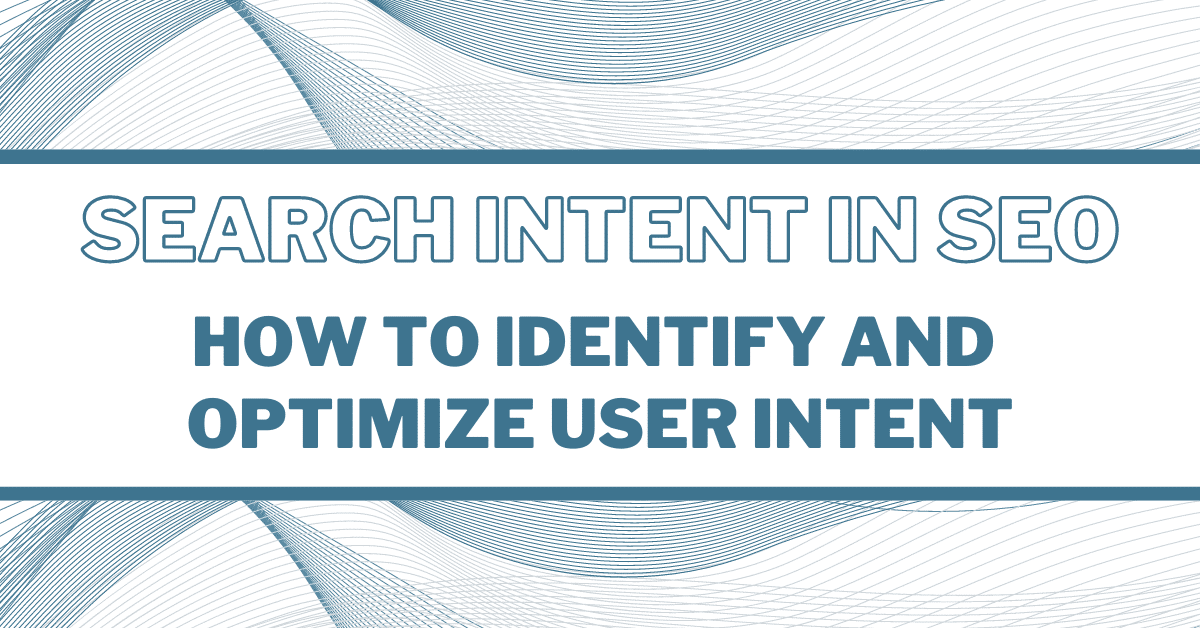Unveiling the Secrets of Ghosted Domains
Explore the intriguing world of expired domains and online opportunities.
Search Intent Unraveled: What Your Keywords Are Really Trying to Say
Unlock the secrets behind search intent! Discover what your keywords reveal and boost your content strategy today.
Understanding the Nuances of Search Intent: A Guide for Marketers
Understanding the nuances of search intent is essential for any marketer aiming to optimize their content effectively. Search intent refers to the underlying motivation behind a user's query, which can be categorized into several types: informational, navigational, transactional, and commercial investigation. For instance, when a user types ‘best running shoes,’ they may be in the research phase, looking for options and reviews before making a purchase. Recognizing these different types of search intent allows marketers to tailor their content strategies to meet the specific needs of their audience, thereby enhancing user experience and improving conversion rates.
To effectively address search intent, marketers should utilize keyword research tools to identify terms that align with users' needs. This involves not only focusing on high-volume keywords but also considering long-tail variations that indicate more specific intentions. For example, optimizing for a keyword like ‘buy running shoes online’ suggests a stronger transactional intent, while ‘running shoe reviews’ points to informational intent. By creating a diverse range of content that addresses these variances in search intent, marketers can better engage their audience, drive more organic traffic, and ultimately foster greater brand loyalty.

Decoding Keyword Intent: How to Align Your Content Strategy
Understanding keyword intent is crucial for any effective content strategy. It goes beyond just identifying keywords; it's about deciphering the underlying purpose behind those searches. Users typically fall into one of three categories: informational, navigational, or transactional. For instance, someone searching for 'how to bake a cake' is likely looking for detailed instructions (informational), while a search for 'buy cake online' signals a transactional intent. By aligning your content with these intents, you can improve user satisfaction and optimize for search engines.
To effectively align your content strategy with keyword intent, start by categorizing your target keywords. Create a content map that outlines which pieces will address specific intents. For example, for informational keywords, you could develop how-to guides, while for transactional keywords, product pages or landing pages are more appropriate. Regularly analyzing your keywords and their performance will ensure that your content continues to meet the evolving needs of your audience.
What Does Your Audience Really Want? Unpacking Search Intent Behind Keywords
Understanding your audience's needs is crucial for creating content that resonates and drives traffic to your blog. To truly grasp search intent, you must analyze the keywords your target audience uses. This involves categorizing keywords into three main types: informational, navigational, and transactional. For instance, an individual searching for "how to cook pasta" is likely looking for a recipe or cooking tips, thus demonstrating informational intent. In contrast, a search for "buy pasta online" showcases transactional intent, indicating a readiness to make a purchase. By unpacking these intents, you can tailor your content to better suit the specific needs of your audience.
Moreover, it's essential to consider the broader context behind a keyword. For example, a user typing in "best smartphones 2023" may be in different stages of the purchasing journey. They might be in the awareness stage, seeking reviews and comparisons, or they may have decision-making intent, ready to purchase the latest model. To meet these varied search intents, consider incorporating a mix of content formats such as in-depth articles, video reviews, and product comparisons. By aligning your content with what your audience genuinely seeks, you can significantly enhance user engagement and boost your blog's SEO performance.